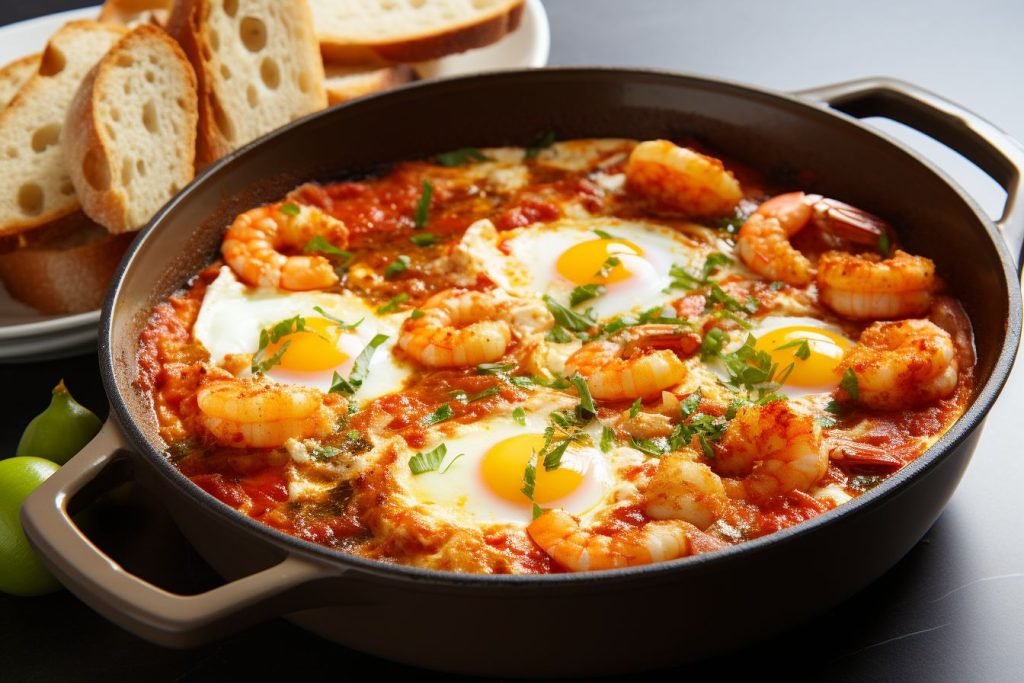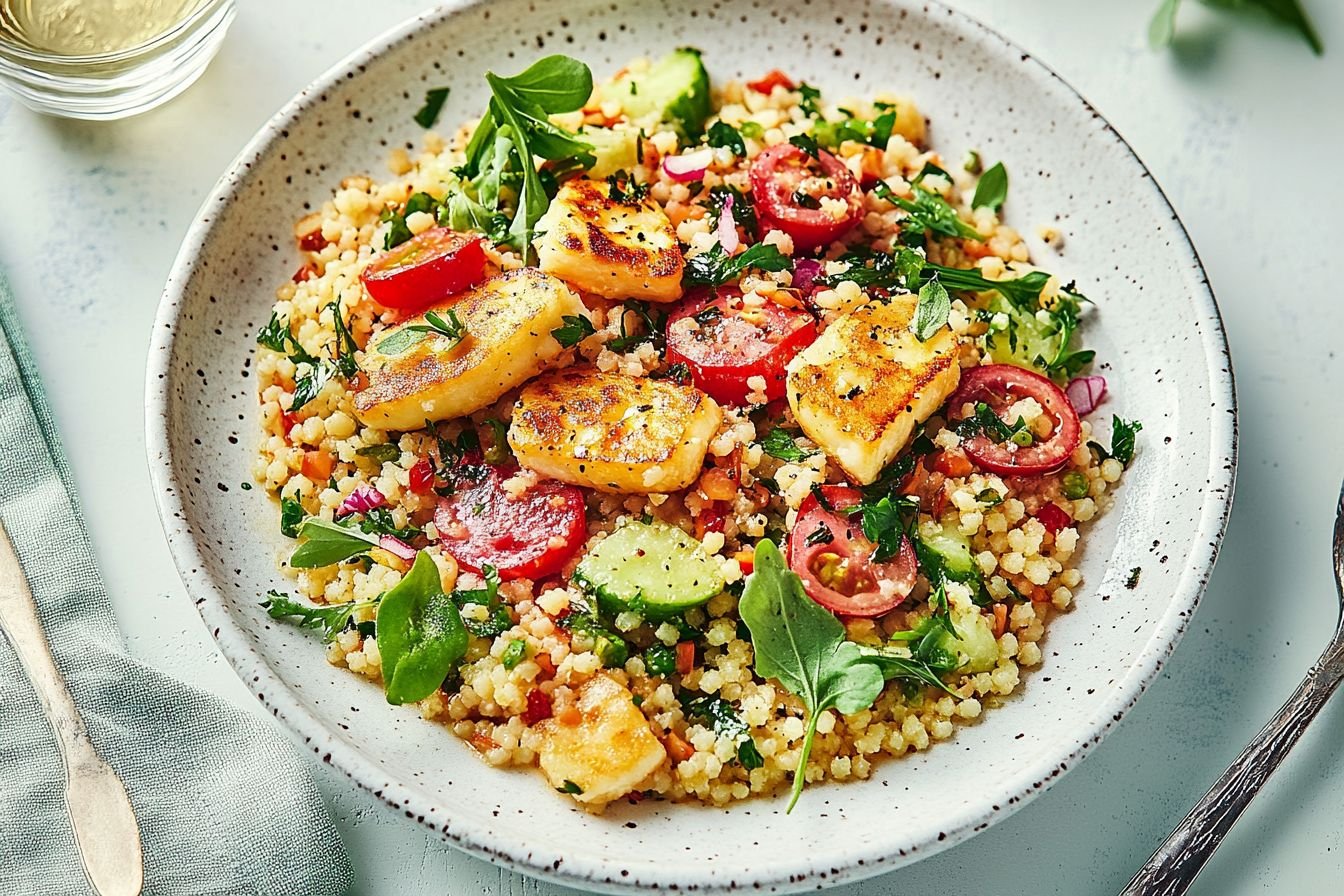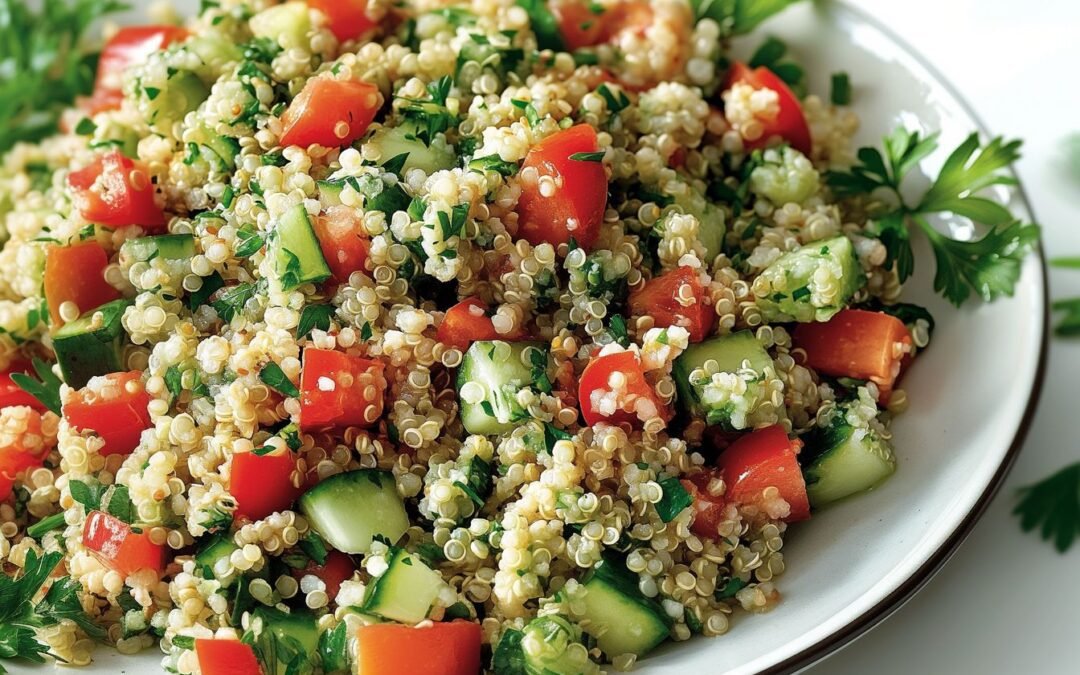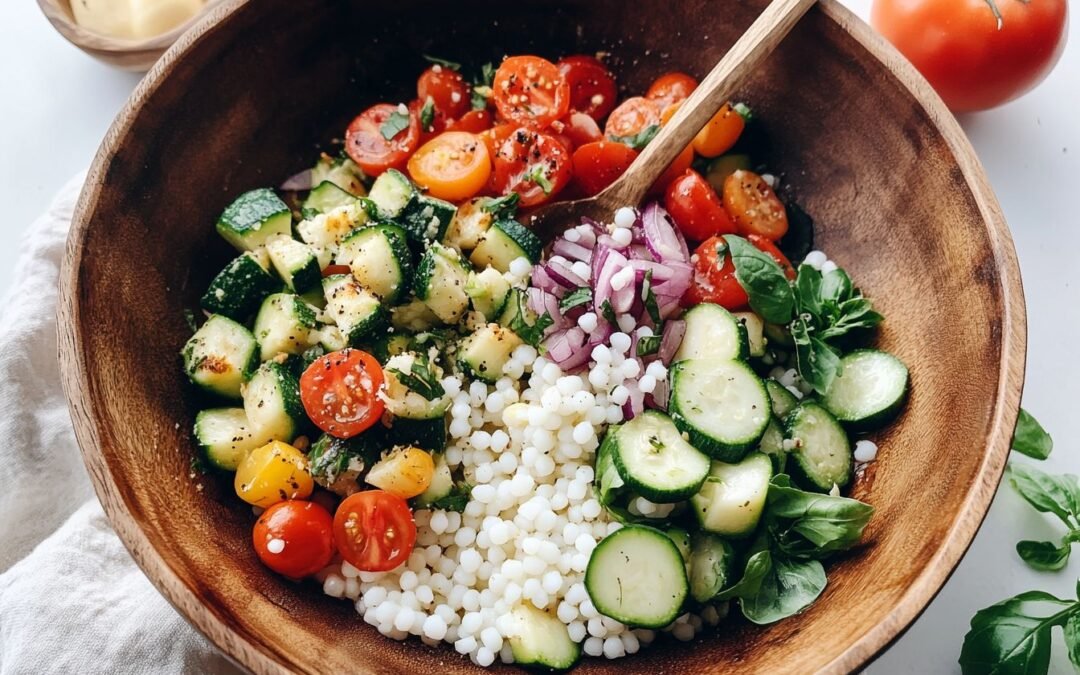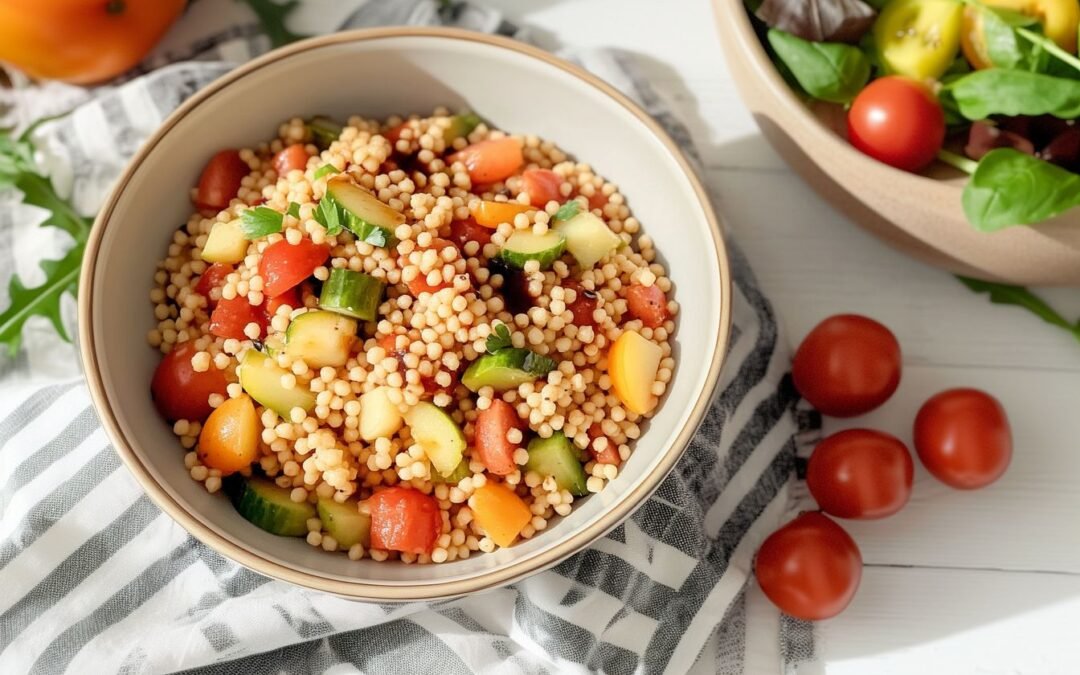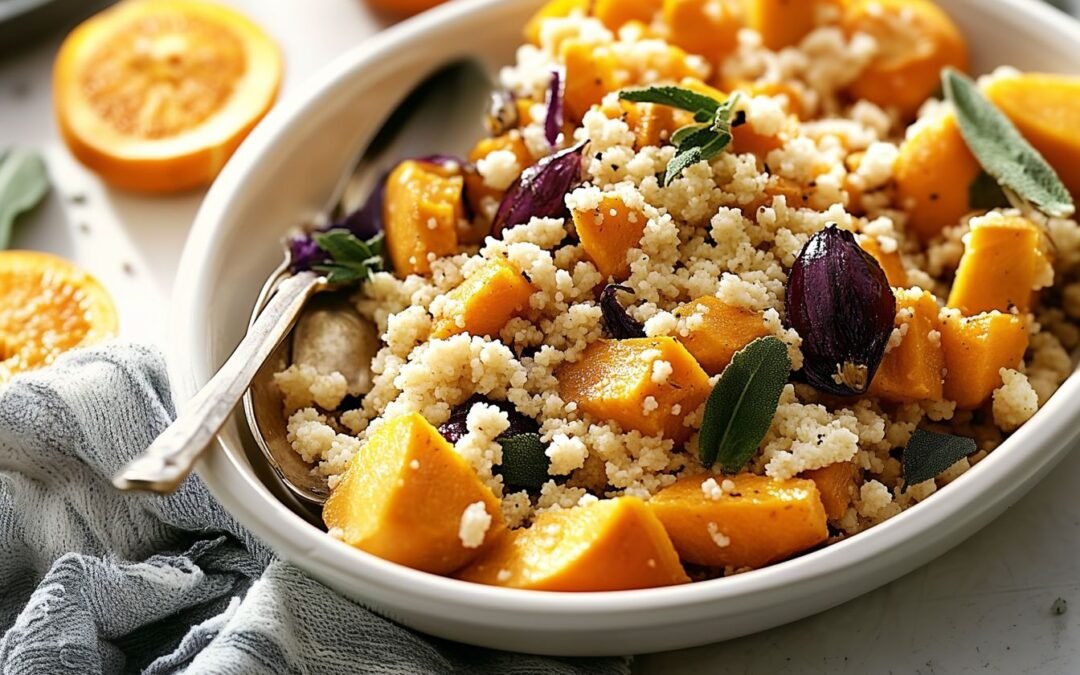Couscous with halloumi is a delightful dish that blends texture and flavor, making it a perfect option for any meal. This recipe combines nutty couscous, savory chickpeas, and crispy halloumi for a satisfying experience. The simple ingredients like olive oil, garlic, cumin, fresh vegetables, and herbs elevate the meal, transforming everyday components into something special.
To prepare this dish, I gather extra-virgin olive oil, garlic, ground cumin, coriander, sea salt, red pepper flakes, chickpeas, couscous, boiling water, fresh lemon juice, cucumber, cherry tomatoes, red onion, parsley, basil, mint, and halloumi cheese. With just a few steps, I create a vibrant and refreshing meal that bursts with Mediterranean flavors.
Understanding Couscous
Couscous is a versatile dish that originates from North Africa. It consists of tiny granules made from durum wheat semolina. This staple food is enjoyed in various forms across different cultures.
Preparing couscous is simple and quick. I steam it over boiling water, which keeps it fluffy. It absorbs flavors well, making it a great base for various ingredients.
There are different types of couscous:
- Traditional Couscous: Smaller, fluffy grains.
- Israeli Couscous (or Pearl Couscous): Slightly larger and chewier.
- Whole Wheat Couscous: Healthier option with more fiber.
Couscous pairs well with a variety of ingredients. I love combining it with vegetables, meats, or cheeses. It balances flavors beautifully and adds texture to meals.
Additionally, couscous is naturally versatile. I like it warm or cold, as a side dish or a main course. It works well in salads, soups, or as a bed for stews.
Nutritionally, couscous provides carbohydrates and some protein. It’s low in fat, making it a healthy choice. I like to add a drizzle of olive oil or a squeeze of lemon for an extra kick.
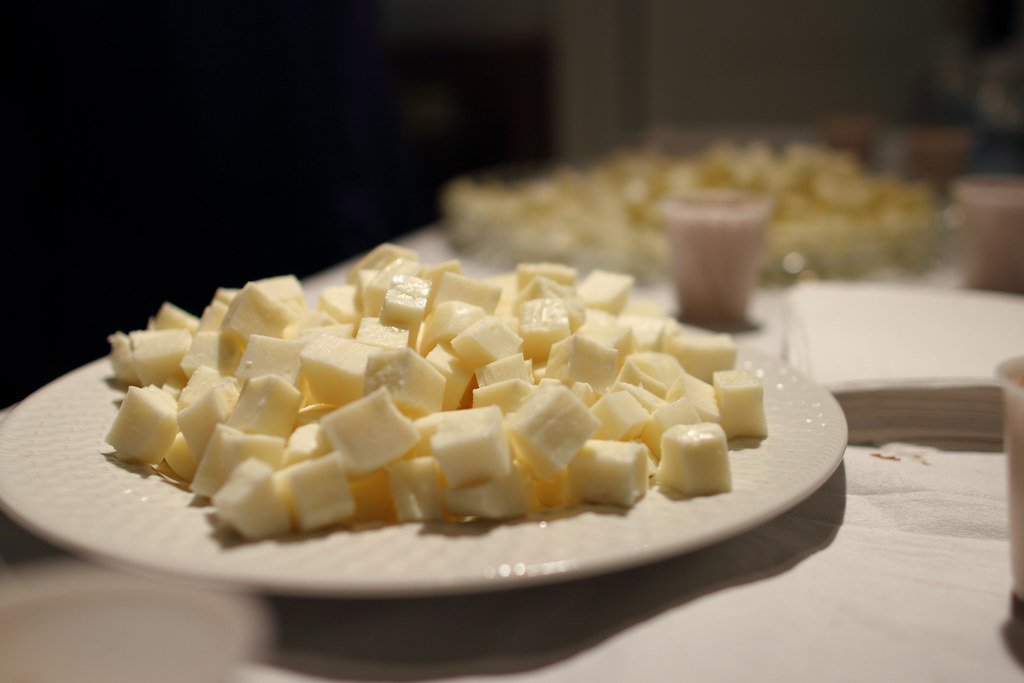
Ingredients:
- ½ cup of extra-virgin olive oil
- 4 finely grated cloves of garlic
- 2 tsp of ground cumin
- 1½ tsp of ground coriander
- 1½ tsp of fine sea salt
- ¼ to ½ tsp of red pepper flakes
- 1 (15 oz) can of rinsed chickpeas
- 1½ cups of couscous
- ½ cup of fresh lemon juice
- 1 thinly sliced cucumber
- 12 oz of halved cherry tomatoes
- 1 cup of thinly sliced red onion
- 1 cup of chopped flat-leaf parsley
- 1 cup of chopped fresh basil
- ½ cup of chopped fresh mint
- 8.8 oz of sliced Halloumi cheese
How to make couscous with halloumi?
- Heat olive oil in a large skillet over low heat. Add minced garlic, coriander, cumin, salt, and red pepper flakes. Sauté for about a minute until fragrant.
- Toss in canned chickpeas and stir frequently until heated through, about 3 minutes. Remove from heat.
- In a large bowl, pour 1½ cups of boiling water over the couscous. Cover it and let it rest for 5 minutes until the water is fully absorbed. Add a splash of lemon juice and fluff gently with a fork.
- Combine chickpea mixture with lemony couscous and toss to coat. Add diced cucumber, tomatoes, red onion, parsley, basil, and mint. Adjust salt to taste.
- Reheat the same skillet over medium heat. Sear halloumi slices for 1-2 minutes per side until golden brown. Tear into bite-sized pieces and sprinkle over the salad before serving.
Nutritional Information
Amount per serving
| Nutrient | Amount |
|---|---|
| Calories | 500 |
| Protein | 17g |
| Carbohydrates | 44g |
| Dietary Fiber | 4g |
| Fat | 29g |
| Calcium | 494mg |
| Iron | 3mg |
Serving Suggestions
Plating and Presentation
For an appealing presentation, I recommend a wide, shallow bowl. First, I spoon the couscous into the center, allowing it to mound slightly. Next, I slice grilled halloumi into thick pieces and arrange them artistically over the couscous.
To elevate the visual appeal, I sprinkle fresh herbs like parsley or mint on top. A drizzle of good-quality olive oil adds a touch of shine. I also enjoy garnishing with pomegranate seeds or roasted nuts for that extra texture and color.
If the dish is part of a larger meal, I might create individual plate portions, ensuring each guest sees the vibrant colors and textures.
Accompaniments and Sides
I recommend serving this salad with grilled vegetables like zucchini or bell peppers. Their smoky flavor complements the dish wonderfully.
Additionally, hummus or tzatziki makes a fantastic dipping option. I find that these dips enhance the overall meal. If I want to highlight Mediterranean flavors, olives or marinated artichokes also work well on the side.
These accompaniments create a harmonious balance and allow everyone to customize their plate to their liking.
Storing Leftovers
Refrigeration Tips
I always use an airtight container to keep my couscous and halloumi leftovers fresh. This prevents moisture loss and keeps the flavors intact.
I allow the dish to cool down to room temperature before sealing it. Placing hot food directly into the fridge can raise the internal temperature, which isn’t safe.
I usually refrigerate leftovers within two hours of serving. This helps prevent bacterial growth and keeps my meal safe to eat later. Leftovers typically last in the fridge for three to four days.
If I think I won’t eat the leftovers within this time frame, I consider freezing them.
Reheating Techniques
When I’m ready to enjoy my leftovers, I use gentle reheating methods to preserve the texture. The microwave works fine, but I often prefer the stovetop.
I heat the couscous over medium heat, adding a splash of water or broth to keep it moist. For the halloumi, I lightly sauté it in a pan until golden brown and warm.
If I’m in a hurry, I might use a microwave. I cover the dish with a damp paper towel to retain some moisture and heat it in short intervals.
Regardless of the method, ensuring even reheating is key to enjoying the flavors of couscous and halloumi once again.
Common Mistakes to Avoid
- Overcooking the Couscous: I always make sure to follow the package instructions closely. Overcooked couscous turns mushy and loses its appealing texture.
- Skipping the Flavoring: I love to season the cooking water with salt and perhaps a splash of lemon juice. This step adds depth to the couscous that plain water just can’t achieve.
- Neglecting to Toast the Halloumi: I never skip toasting the halloumi first. It enhances the flavor and provides a delightful crispy texture.
- Not Allowing the Couscous to Rest: After cooking, I let the couscous sit for about five minutes. This resting period helps it absorb any remaining moisture and improves the overall texture.
- Forgetting to Fluff: Before serving, I always fluff the couscous with a fork. This action separates the grains and makes the dish much more visually appealing.
Conclusion
Couscous with halloumi creates a delightful combination of flavors and textures. The fluffy couscous pairs well with the salty, chewy halloumi, making each bite satisfying.
I enjoy incorporating a variety of vegetables and herbs, like cherry tomatoes and parsley, to enhance the dish. This not only adds color but also boosts the nutritional value.
Couscous with halloumi works well for casual meals or gatherings. Its simplicity and taste make it a perfect choice for both weeknight dinners and special occasions.
One more thing, you can pair this salad with shakshuka with shrimp. It’s delicious!
Get that recipe now (by clicking the image below):
